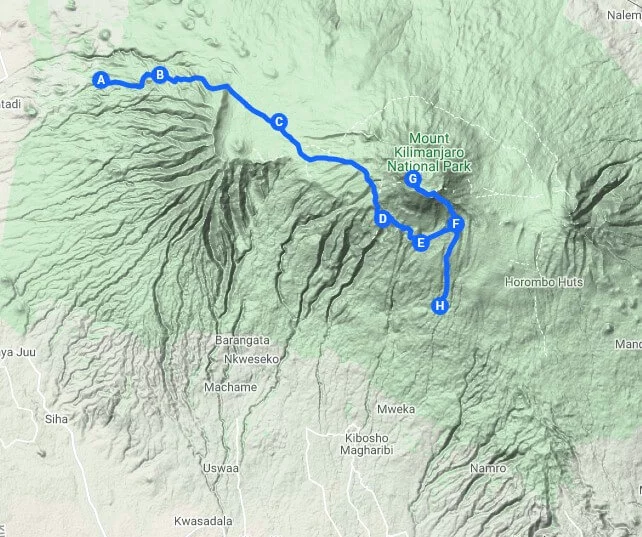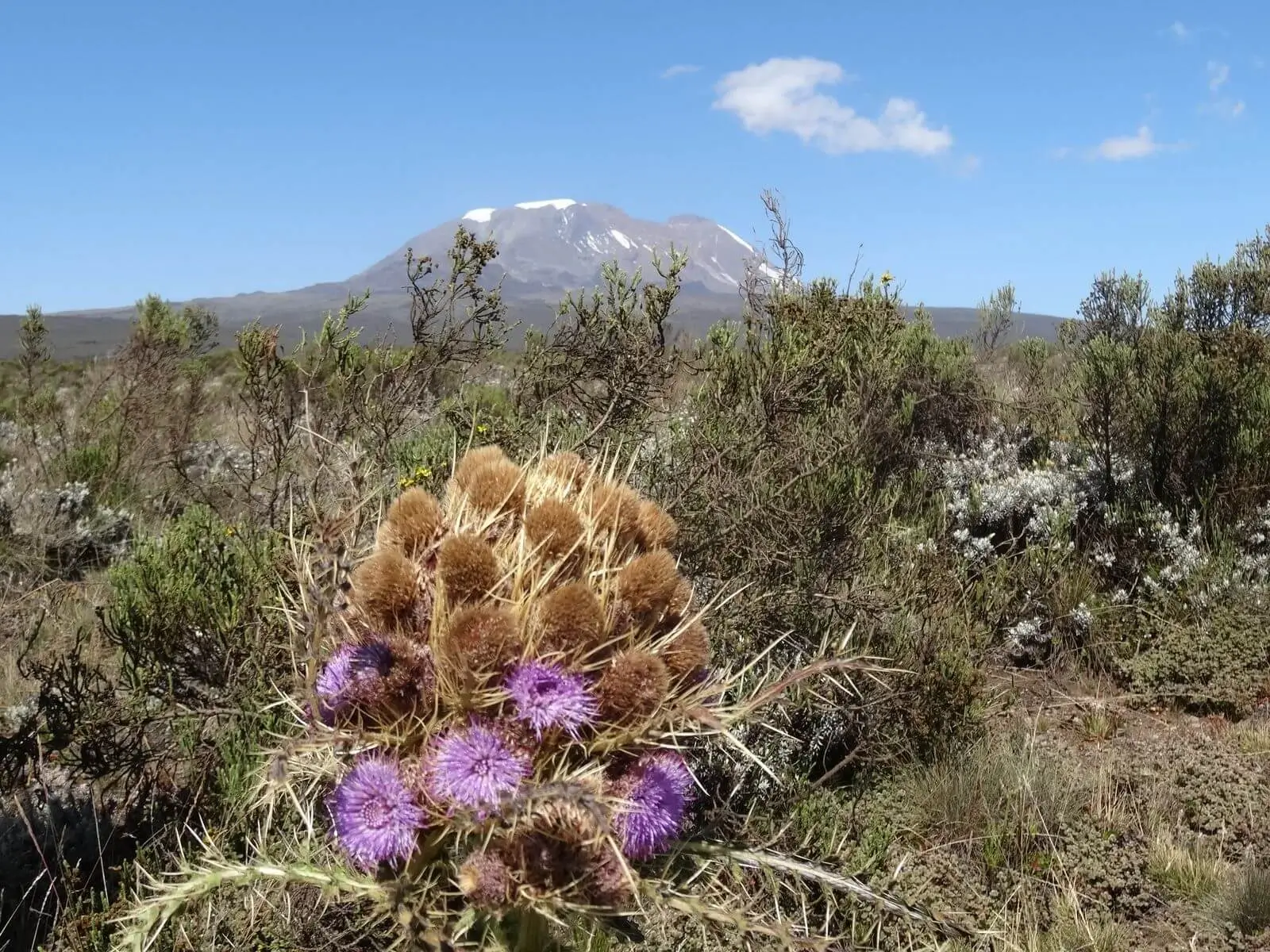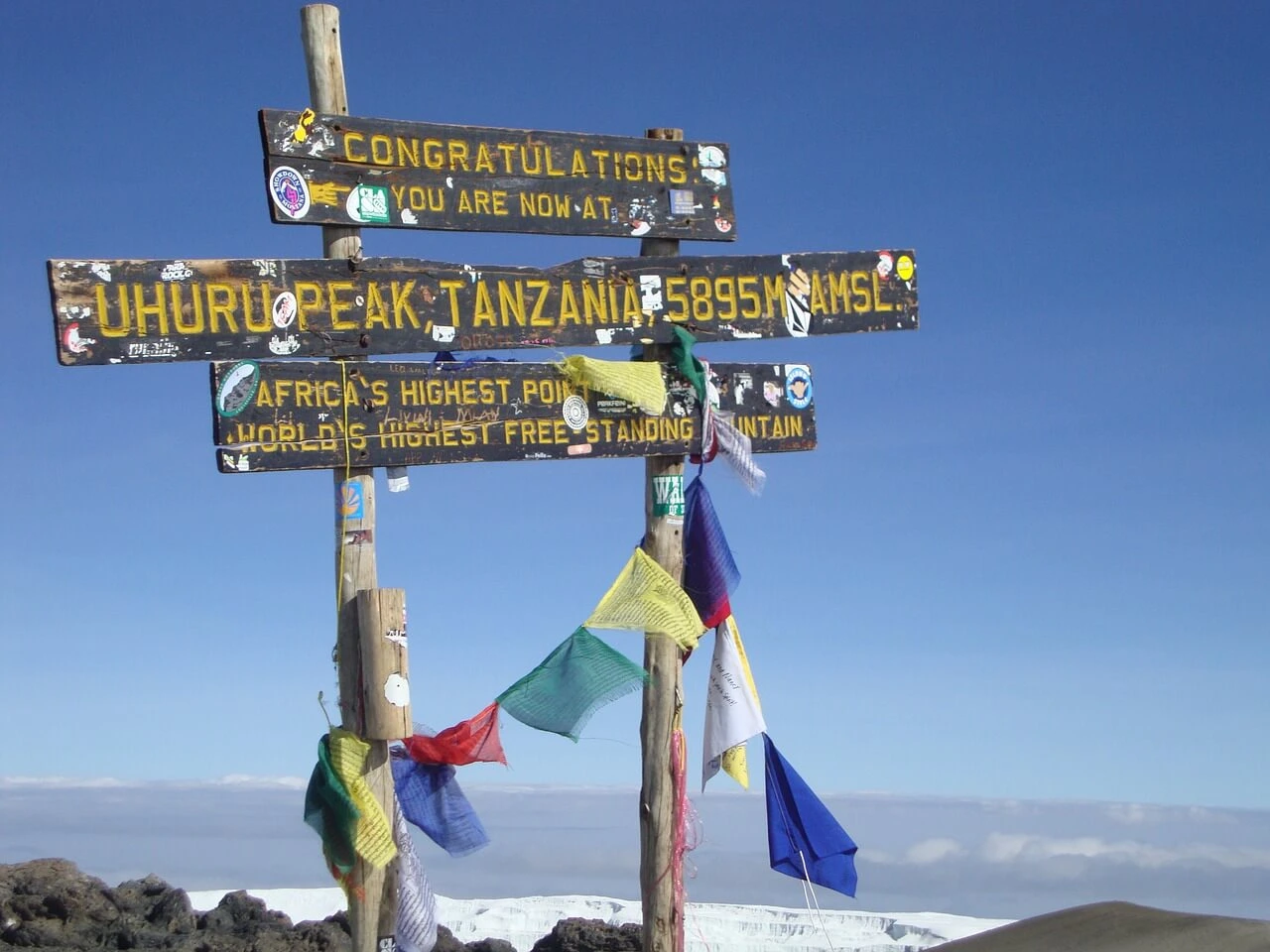Day-1: Kilimanjaro International Airport arrival and transfer to hotel.
Day-2: Lemosho Glades (2200m) to Mkubwa Camp (2750m)
Elevation: 2200 metres
 to 2750 metres
to 2750 metres
Distance: 6 kilometres
Trekking duration: 3 hours to 4 hours
Environment: Montane forest
This morning we stop briefly in Moshi and then drive about 5 hours to Londorossi Park Gate at 2200m . After completing park formalities for Lemosho Route, we drive for another 11km to Lemosho Glades at 2000m. From here, we trek about 3 hours to Mkubwa, our camp.
Day-3: Mkubwa Camp to Shira Camp 1 (3500m)
Elevation: 2750 metres up to 3500 metres
Distance: 8 kilometres
Trek time: 5 to 6 hours
Environment: Moorland
After breaking camp, we hike to Shira Camp 1 located near a stream. We hike through moorland shrub taking in views of Mt Meru and this afternoon we have the chance to film incredible sunsets.
Day-4: Shira Camp 1(3500m) to Shira Camp 2 (3840m)
Elevation: 3500 metres to 3840m metres
Distance: 6 kilometres
Trek duration: 2 to 3 hours
Environment: Moorland
The route is relatively easy trek across the plateau that leads to Shira Camp 2 on moorland meadow. A variety of walks are available on the plateau making this excellent for acclimatisation to the gains in altitude. Shira is one of the three volcanoes on the Kilimanjaro massif.

Day-5: Shira (3840m)- Lava Tower (4630m)-Barranco (3950m)
Elevation: 3840 metres up to 4630 metres then down to 3950 metres
Distance: 10 km
Hiking Time: 6 hours - 8 hours
Habitat: Alpine Desert
After breakfast, you hike though the moorland scrub and enter into a moonscape of semi-alpine desert, while you hike constantly upwards toward Lava Tower. As you approach an altitude of 4200m, you may start to feel a shortness of breath as the effects of altitude take hold. After Lava Tower, you trek into a beautiful valley to Barranco camp where you spend the night at a lower altitude than Lava Tower. Today follows the golden principle of climb high and sleep low on Lemosho Route.
Day-6: Barranco (3860m) to Barafu (4550m)
Elevation: 3860 metres up to 4550 metres
Distance: 13 kilometres
Trek time: About 7 hours
Early morning at around 07h00, the Barranco Wall lies ahead which you climb, to bring you out to a great spot with incredible views over Moshi and the clouds below. The route then descends down through the Karanga Valley and eventually come out at Karanga Valley Camp. Barafu Hut is another 2 hours trek higher up towards Kibo Crater.

Day-7: Barafu (4550m)- Uhuru Peak (5895m)-Mweka (3100m)
Elevation: 4600 metres to 3100 metres
Highest point: 5895 metres (Uhuru Peak)
Distance: 30 kilometres (7 kilometres ascent, 13 kilometres descent)
Trek duration: 13 to 16 hours (6 - 8 hours ascent, 7 - 8 hours descent)
Environment: Stone scree / ice-capped summit
Rising before midnight, you start your climb into the night in a North westerly direction. The route will take you towards Stella Point (5685) on the crater rim. It can take anything from 5 - 6 hours and is physically challenging. After a short rest at Stella Point the trek to Kilimanjaro summit is another altitude gain of 200m, taking anywhere from 1-2 hours. After reaching the summit of Kilimanjaro, Uhuru Peak, you hike down to Barafu and then down to Mweka Camp
Day-8: Mweka camp (3100m)- Mweka Gate (1980m)
This morning is a short 3-hour scenic hike to Mweka. Climbers who reached Stella Point (5685m) are issued with green certificates and those who reached Uhuru Peak (5895m) receive gold certificates for your Lemosho Route on Kilimanjaro.
Day-9: Depart
Today you are transferred to Kilimanjaro airport for your flight home.
End of services
Kilimanjaro
questions
